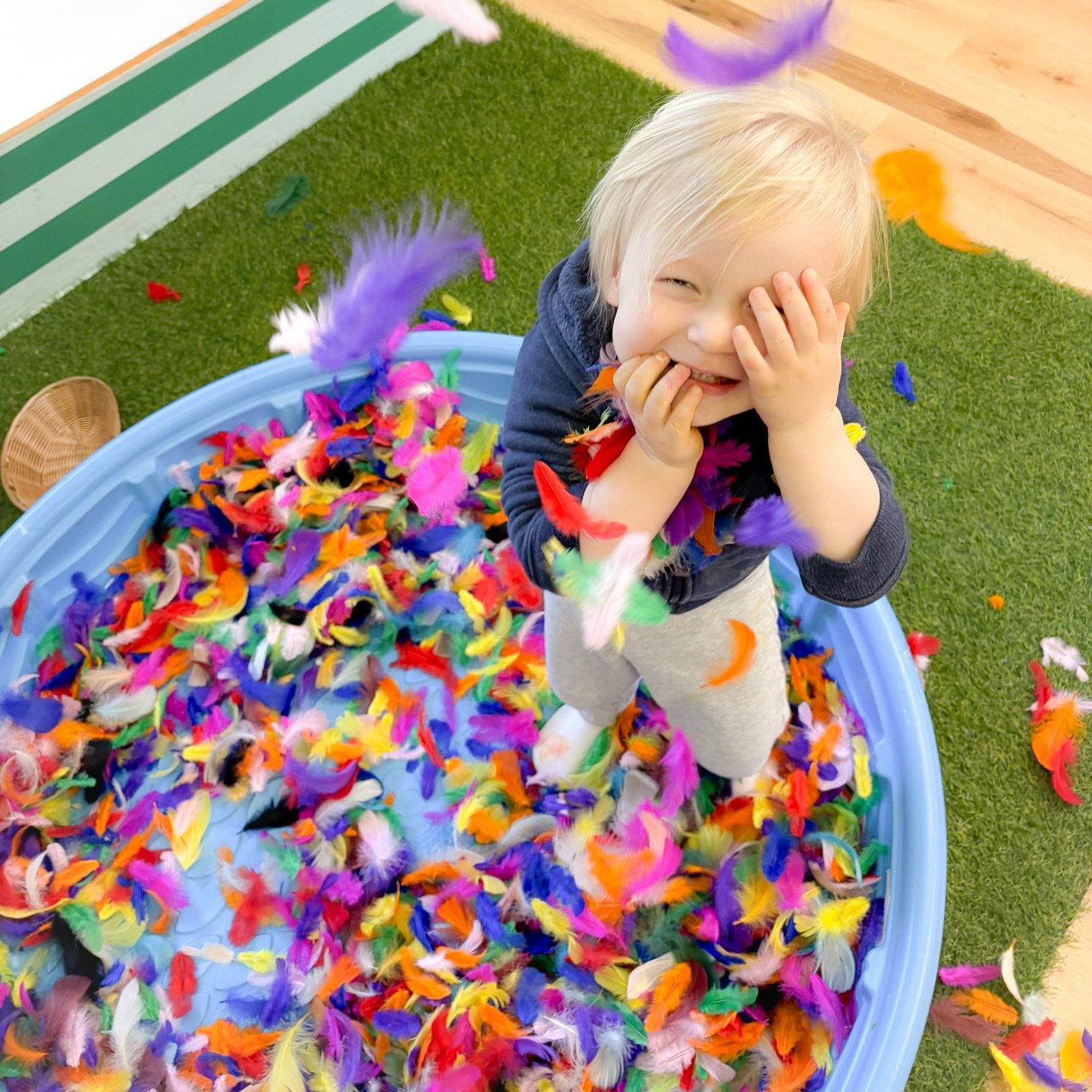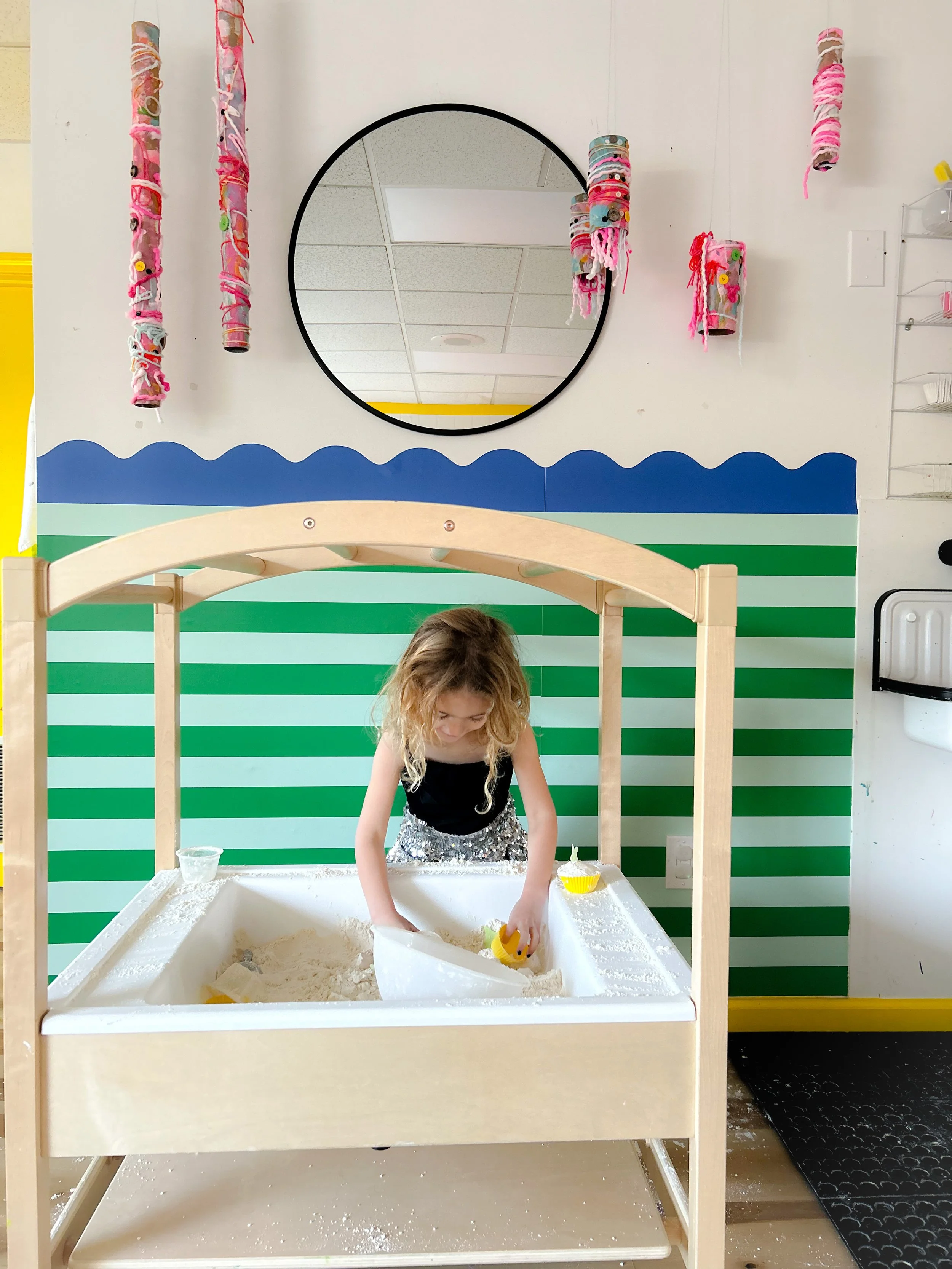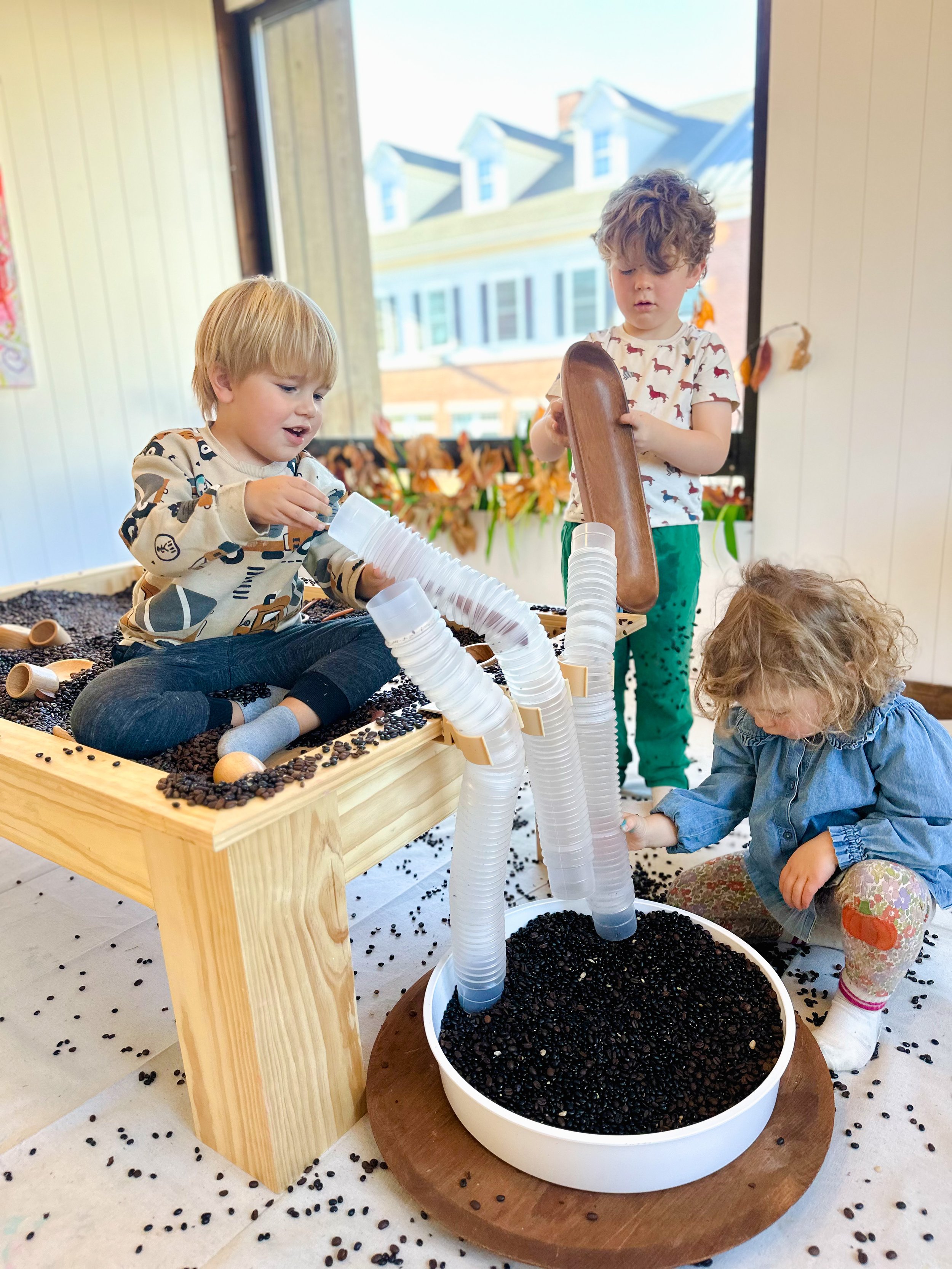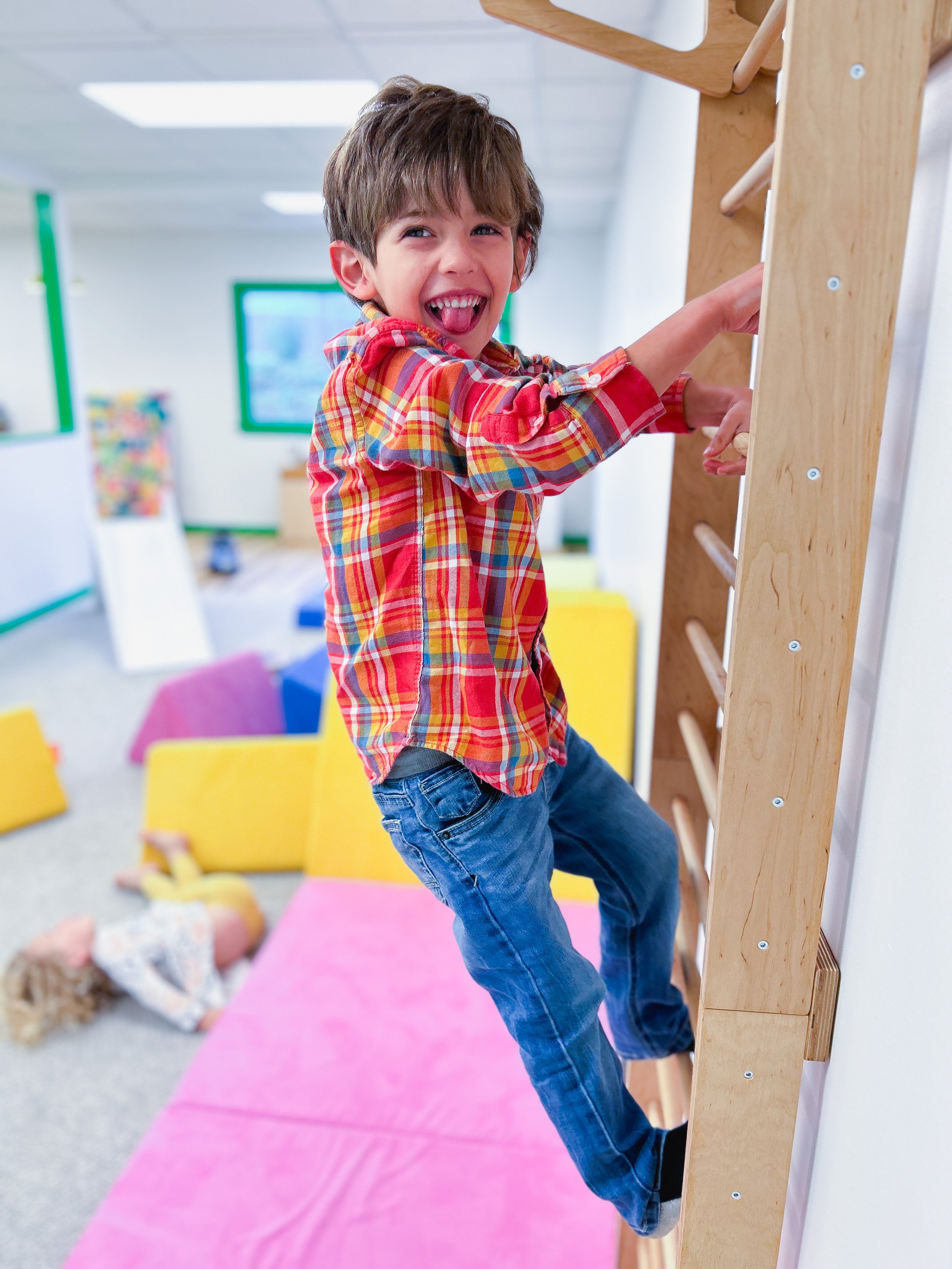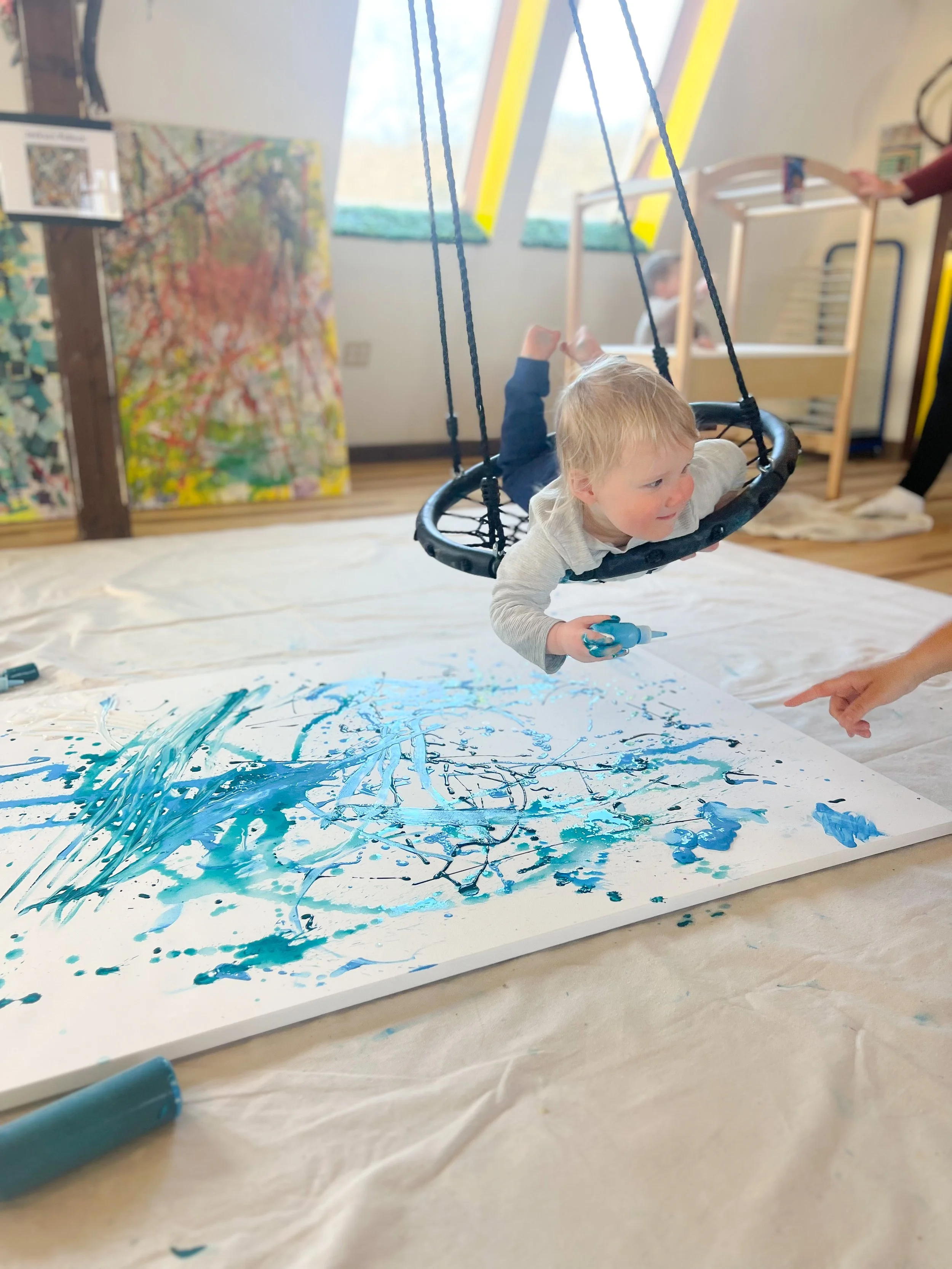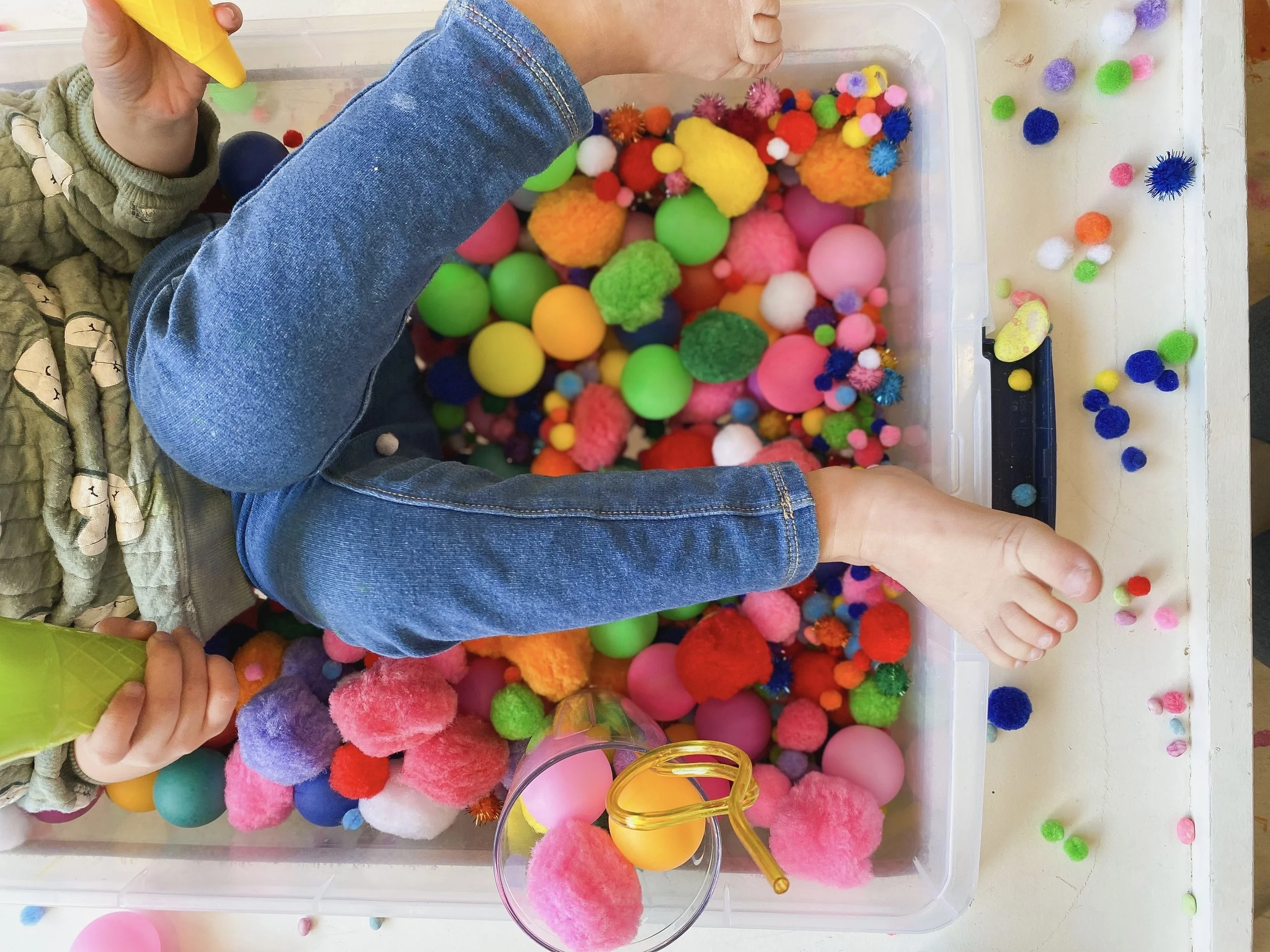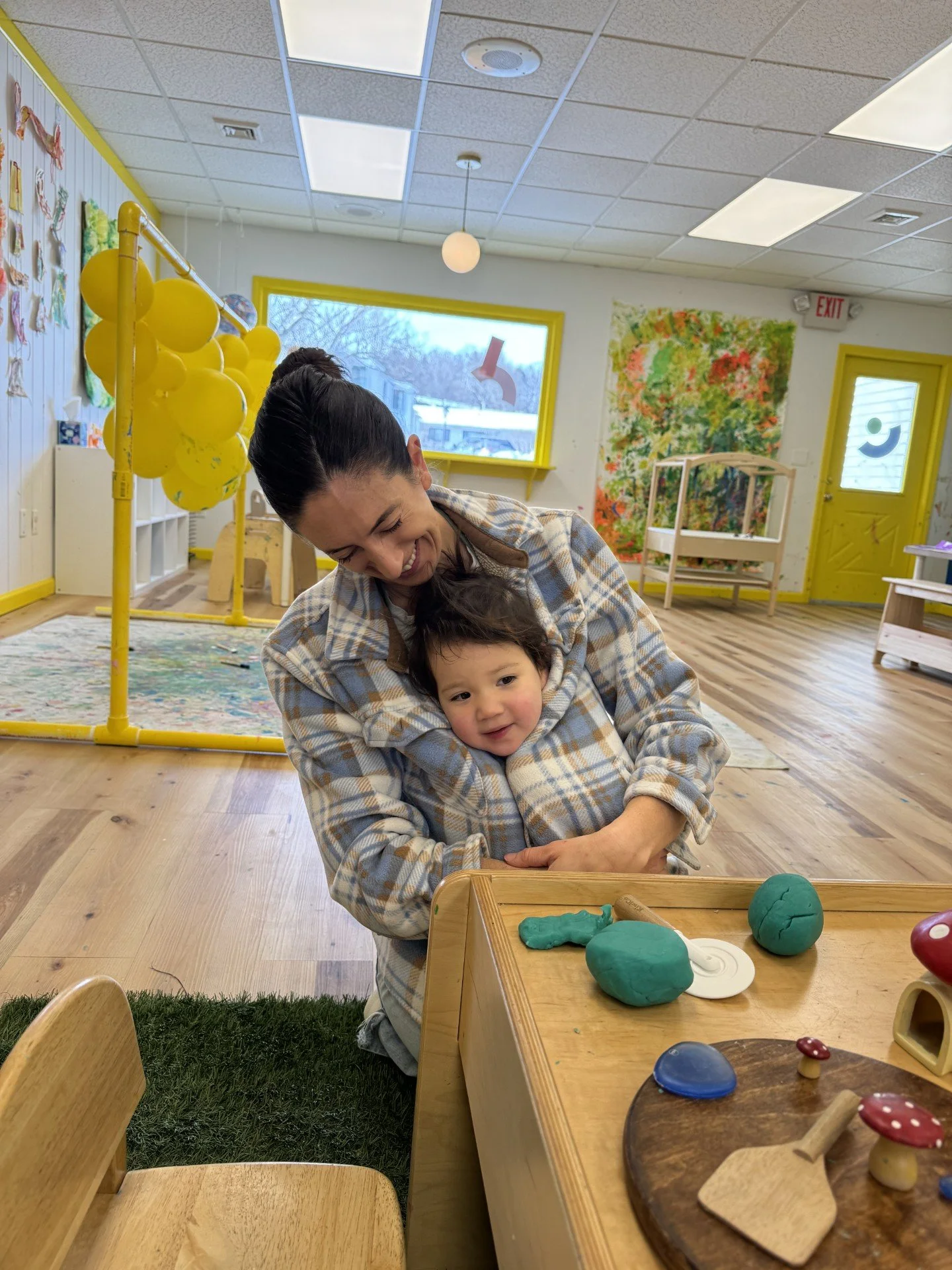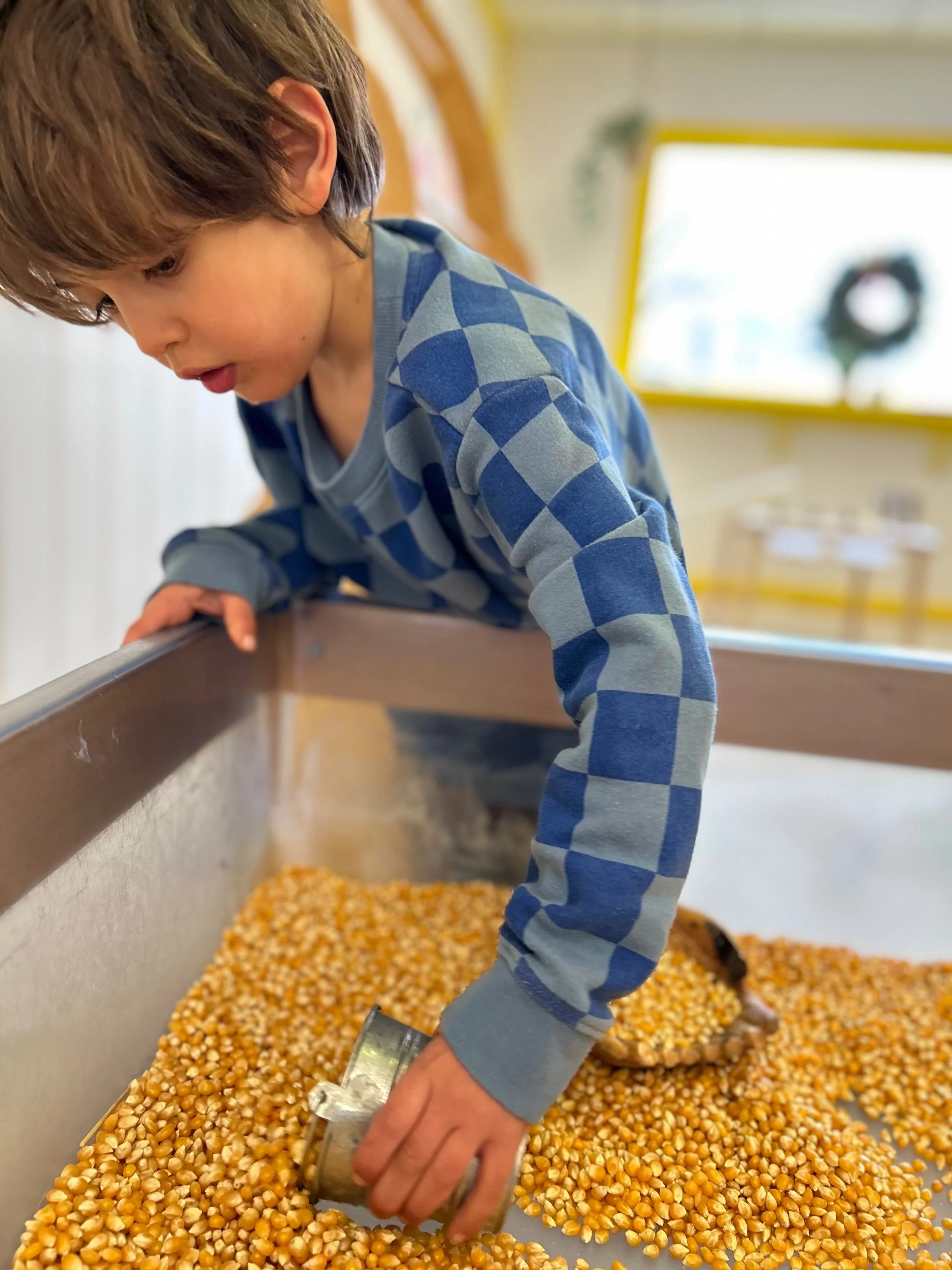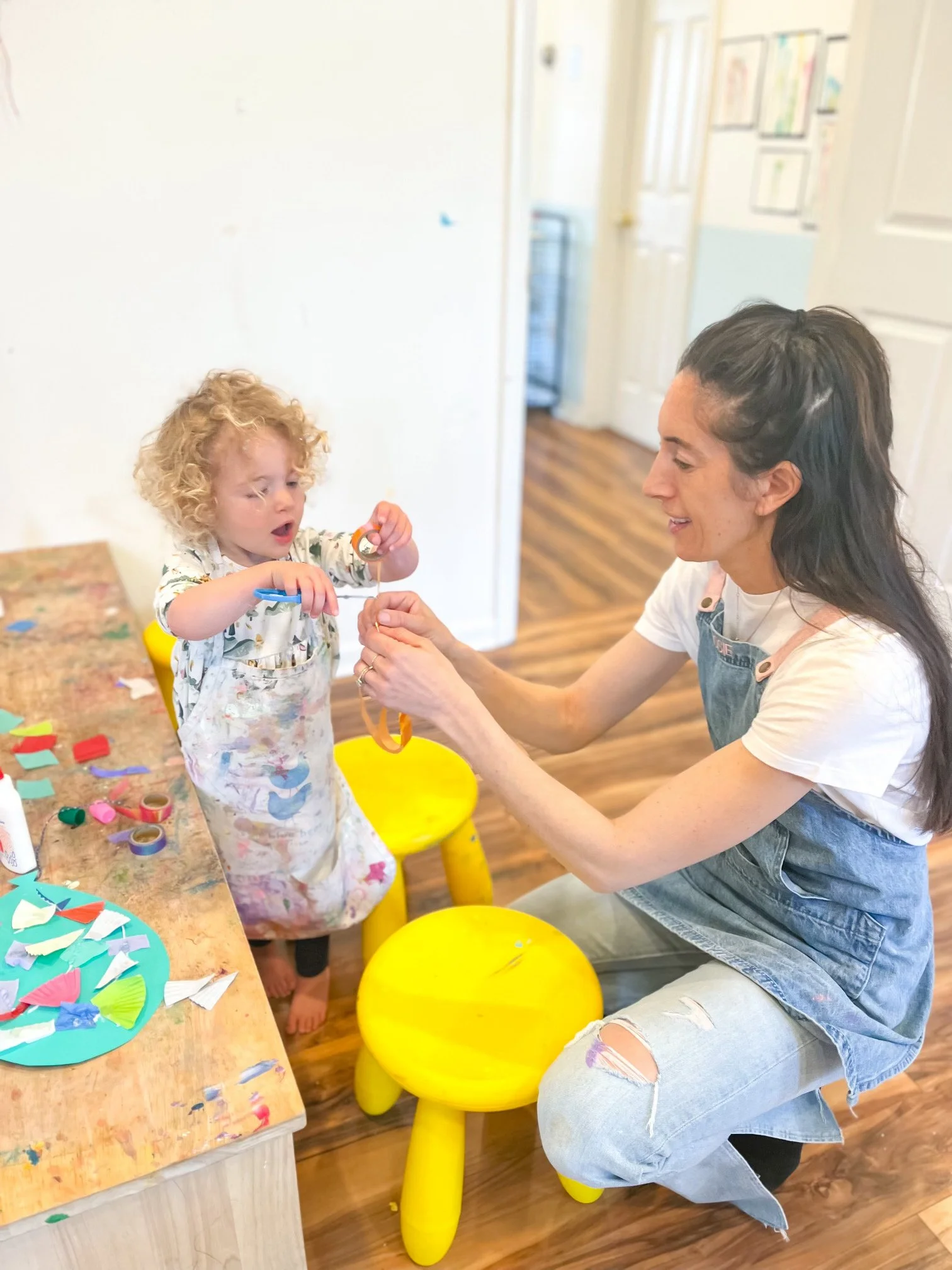Why Your Child Touches Everything, Dumps Everything, and Climbs Everything (And Why It's Absolutely Perfect)
Your toddler just emptied every container in your kitchen cabinets. Again. Your preschooler can't walk past anything without touching it. Your child climbs on furniture like it's their personal jungle gym.
Other parents might give you looks, but here's what I know after years of trusting kids: your child is doing exactly what their brilliant developing brain needs them to do.
Celebrating Your Child's Brilliant Sensory System
Every child has a unique sensory system that knows exactly what it needs to thrive. Some kids need gentle, quiet experiences while others require intense, dynamic movement. Each approach is perfectly designed for that child's developing brain.
I've watched hundreds of children move through our studios, and here's what I've learned: when children touch, dump, climb, and explore, they're gathering crucial information about their world and building the neural pathways they need. This isn't behavior that needs changing - it's development that deserves celebrating.
Different Ways Kids Explore Their World
Kids Who Experience the World Through Their Hands
These children run their hands along every wall, squeeze every piece of play dough until it oozes through their fingers, and somehow always have paint under their fingernails. Their hands are their primary learning tools, and it's beautiful to watch.
What makes them amazing: These children have incredibly developed tactile systems that gather rich information about textures, temperatures, and materials. They're natural scientists, constantly researching their environment.
How to celebrate them: Provide abundant touching opportunities because that's how their brain learns best. Texture bins, finger paints, play dough, and fabric scraps become their laboratory equipment.
At home: Keep a treasure box of interesting textures within reach. Smooth stones, fabric squares, even a piece of sandpaper feeds their brilliant curiosity.
Kids Who Understand Physics Through Action
These brilliant little scientists can't resist discovering what happens when everything comes out. Toy bins, kitchen drawers, bookshelves - they're conducting important research about containers, gravity, and spatial relationships.
What makes them amazing: They're building deep understanding of cause and effect, spatial relationships, and object permanence. Plus they're getting crucial proprioceptive input from the satisfying heavy work of moving objects.
How to celebrate them: Honor their research by providing containers designed for dumping. Large bins of safe materials like rice, pasta, or blocks let them conduct their experiments freely.
At home: Create dedicated research stations with materials that are meant to be explored. Rotate the contents to fuel their ongoing investigations.
Kids Who Navigate the World Vertically
Chairs, sofas, counters, playground equipment, trees - these natural athletes see climbing opportunities everywhere. They're not creating chaos; they're building incredible body awareness and strength.
What makes them amazing: Their vestibular and proprioceptive systems are actively seeking the input they need for optimal development. This is their brain's brilliant way of building balance, coordination, and spatial awareness.
How to celebrate them: Create abundant climbing opportunities because their body knows what it needs. Couch cushions, sturdy play structures, or designated climbing furniture honors their natural wisdom.
At home: Work with their climbing nature rather than against it, making spaces as safe as possible for their important developmental work.
Kids Who Find Joy and Regulation in Movement
Round and round they go, sometimes until they're dizzy, sometimes just for the pure joy of rotation. This beautiful movement is their vestibular system actively seeking the exact input it needs to feel organized and happy.
What makes them amazing: They've discovered that spinning helps their nervous system feel calm and focused. Their body wisdom is incredible - they know exactly what movement they need.
How to celebrate them: Provide beautiful spinning opportunities because they've found something that truly serves them. Office chairs, tire swings, or simply open space for spinning honors their discovery.
At home: Embrace the spinning in safe spaces and watch how much more regulated they feel afterward.
Kids Who Love Deep Pressure and Impact
These children dive into couch cushions, seek out bear hugs, and somehow always end up in joyful piles on the floor. They've discovered that deep pressure input makes their body feel amazing and organized.
What makes them amazing: Their proprioceptive system knows exactly what it needs to feel calm and regulated. That crashing and deep pressure actually helps them focus and feel grounded.
How to celebrate them: Provide abundant crashing opportunities because they've found something that truly works for their body. Crash mats, bean bags, or wrestling with parents feeds their wisdom.
At home: Create designated crash zones where this beautiful self-regulation can happen safely.
Kids Who Create Order Through Gathering
Pockets full of rocks, rooms full of treasures, collections that seem random but make perfect sense to them. These natural curators are building understanding through organization and categorization.
What makes them amazing: They're developing sophisticated classification skills and creating security through their carefully chosen collections. Their organizational thinking is already advanced.
How to celebrate them: Honor their collections because they represent important cognitive work. Provide special containers for treasures and appreciate their unique way of making sense of the world.
At home: Give them sacred spaces for collections and recognize the deep thinking behind what might look like "junk" to adults.
Why This Exploration Matters for Development
Building Body Awareness
All this touching, dumping, and moving helps children develop proprioception - awareness of where their body is in space. This foundation supports everything from handwriting to sports skills later on.
Developing Self-Regulation
When children get the sensory input they need, they're better able to focus, learn, and manage their emotions. That spinning or crashing actually helps them feel calm and organized.
Supporting Learning
Sensory exploration builds neural pathways that support academic learning. The child who dumps and sorts is practicing classification skills. The climber is developing spatial reasoning.
Building Confidence
When children can safely explore their impulses, they develop trust in their own bodies and judgment. This confidence carries over into all areas of development.
How I Support Natural Exploration at PopArt!
At our studios, I create spaces where different types of sensory exploration can happen safely. We have materials for touchers, containers perfect for dumping, and spaces designed for movement. I trust children to know what their bodies need.
When a child spends an entire session dumping and refilling containers, I celebrate their focus and determination. We don't redirect them to "art-making" - we recognize that this IS their art, their learning, their brilliant brain at work.
Supporting Your Explorer at Home
Create Sensory-Safe Zones
Designate areas where different types of exploration are welcome. A corner with crash mats, a bin of materials for dumping, or a wall with different textures to touch.
Work With Their Nature, Not Against It
Instead of constantly saying no, I teach parents to offer alternatives. "Tables aren't for climbing, but this step stool is perfect for that." Follow their lead - watch what your child seeks out and provide more of it in safe ways.
And yes, you can set boundaries. It's okay to have rules about where and when certain behaviors happen. "We dump rice in the bin, not on the carpet." But the goal is creating space for their exploration, not stopping it.
Trust Your Child's Body Wisdom
I've learned to see the need behind the behavior. The child who touches everything isn't being naughty - they're gathering information their brain needs. The dumper isn't making a mess - they're exploring cause and effect in the most natural way possible.
When you can meet their sensory needs proactively, you'll often see challenging behaviors disappear. Because here's the thing - they were never challenging behaviors. They were just unmet needs.
Embracing the Beautiful Reality of Development
Your house might be messier. Your child might get dirtier. Things might get dumped, touched, and rearranged constantly. This is the beautiful reality of supporting a developing human, and every bit of it is worth celebrating.
I've learned that when you honor their brilliant body wisdom, everyone feels better. The child gets what they need, and parents can relax into supporting their child's natural development.
Ready to Embrace Your Little Explorer?
Every child's sensory journey is unique, and understanding what drives their exploration helps you support them better. When you honor their need to touch, dump, climb, and discover, you're supporting crucial development that will serve them for life.
Join a PopArt! Kids Class to see sensory exploration in action:
Ridgefield Studio
80 Grove Street, Ridgefield, CT
Email: rosie@popart.kids
Wilton Studio
196 Danbury Road, Wilton, CT
Serving families throughout Fairfield County including Danbury, Redding, Weston, and New Canaan
Come see what happens when children's natural curiosity meets a space designed to honor every type of explorer. I'll be here, celebrating your little scientist as they discover what they can create.
At PopArt! Kids, we believe every child's way of exploring the world is valid and valuable. Our studios provide safe spaces for touching, dumping, climbing, and discovering while building the skills children need to thrive.
Frequently Asked Questions About Sensory Exploration
Q: At what age do children start showing different sensory preferences? A: Sensory preferences can be observed as early as infancy, but become more obvious during toddlerhood. We welcome children starting at 1.5 years old at PopArt! Kids and work with each child's unique sensory profile.
Q: How do I manage sensory exploration without destroying my house? A: Create designated spaces for different types of exploration and provide appropriate materials. Sensory bins, crash mats, and touch-friendly walls can contain the exploration while meeting your child's needs.
Q: Is constant touching and dumping typical for toddlers? A: Absolutely! This is how young children naturally learn about their world. These behaviors show curiosity and healthy development in action.
Q: How long do these intense sensory-seeking phases last? A: It varies by child, but most intense sensory exploration happens during toddlerhood and preschool years. As children's nervous systems mature, they typically need less intense input.
Q: What if my child seems to need different sensory input than other kids? A: Every child has their own unique sensory profile, and that's something to celebrate! Some children thrive with gentle input while others need more dynamic experiences. Both approaches are perfectly wonderful.
Q: Do these sensory activities really support development? A: Yes! Sensory exploration builds body awareness, self-regulation skills, and neural pathways that support all future learning. It's how children naturally build their foundation skills.
Q: How often should I provide sensory exploration opportunities? A: Daily sensory experiences are ideal, but follow your child's cues. Some days they'll need more input, other days less. Trust their internal guidance.
Q: What's the most important thing to remember about sensory exploration? A: The behavior you're seeing likely serves an important purpose for your child's development. Instead of stopping it, find safe and appropriate ways to support their sensory needs.

